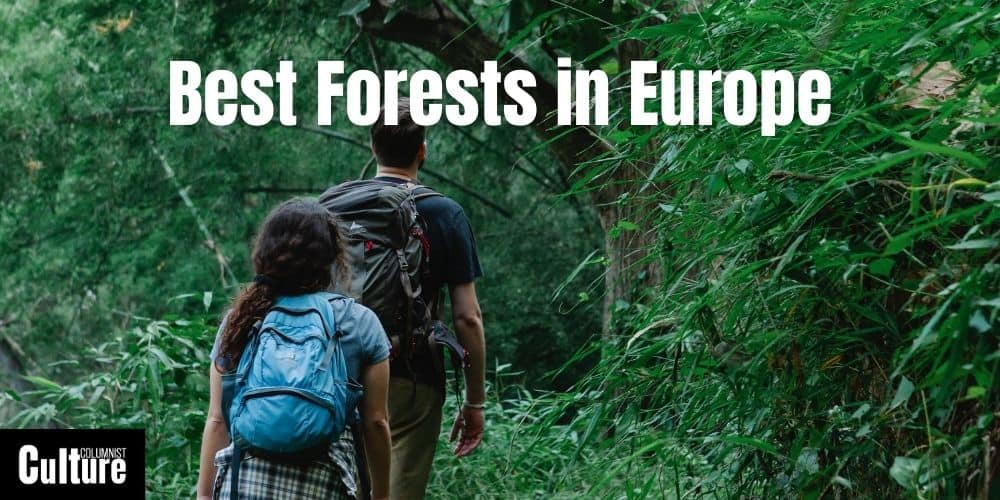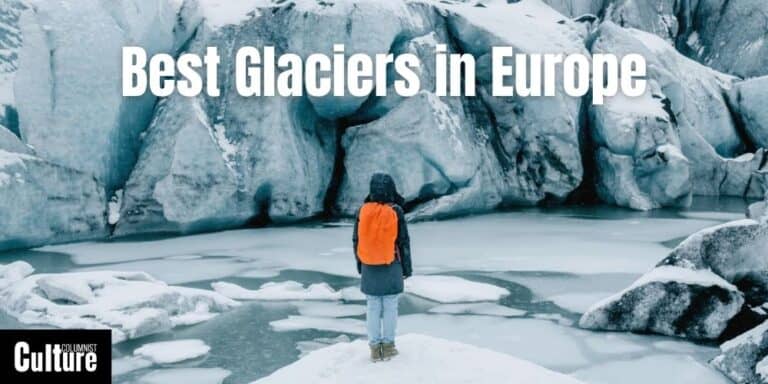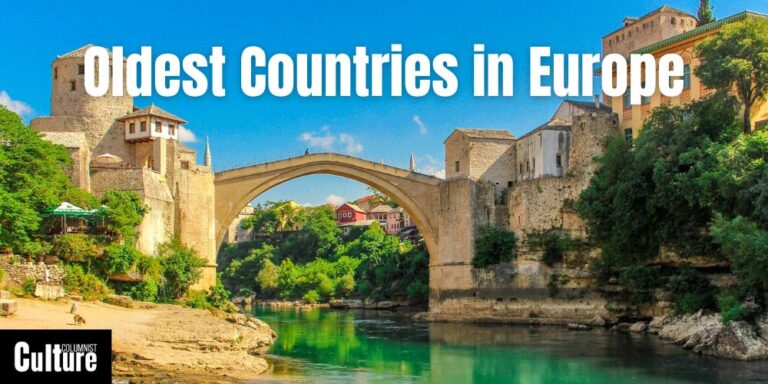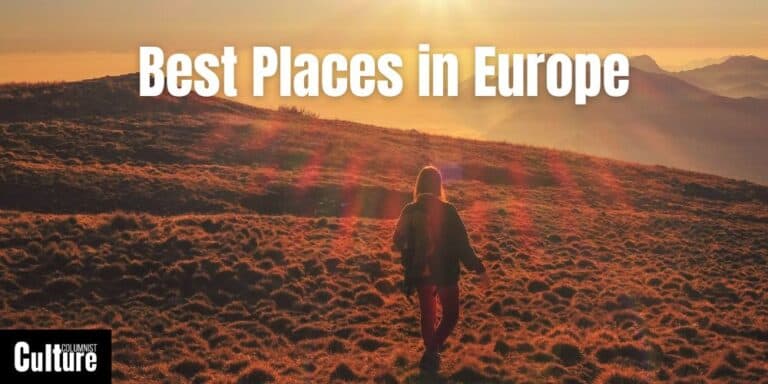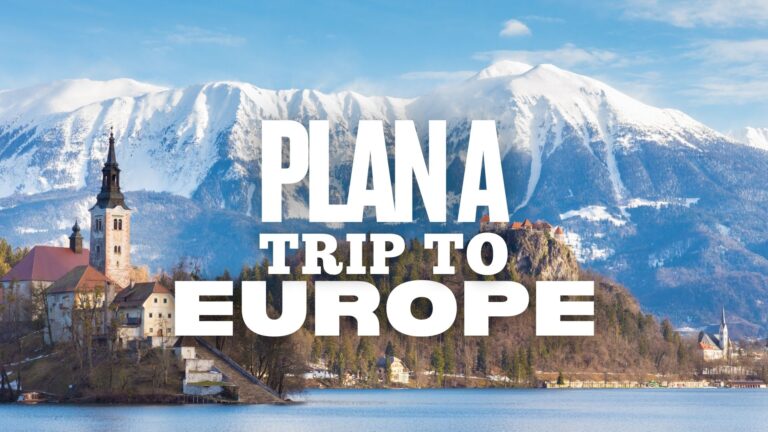Best Forests To See And Explore In Europe
Europe is a continent teeming with diverse landscapes, and its forests are some of its most dominant, covering 37.7%, according to the European Commission in 2023.
Europe has many different types of forests, including boreal, alpine and even subtropical forests, reflecting the continent’s geoclimatic diversity. Whether you’re looking to hike, photograph wildlife, or simply bask in nature, the forests of Europe offer something for everyone.
When visiting forests in Europe, it’s important to consider accessibility, amenities and safety in terms of wildlife, as many forests are located in remote and isolated mountainous regions. Seasonal changes play a crucial role in the activities that are available, while some forests offer year-round attractions.
Major countries with notable forests include Germany, with its legendary Black Forest, Finland’s vast boreal stretches, and the deciduous woodlands of France. Availability and prices for activities and guided tours can vary, ranging from budget-friendly to luxurious experiences.
So, whether you’re a solo traveler in search of solitude, a family looking for a fun-filled trip, or a couple on a romantic getaway, there is a forest to suit your travel goals. Below is a curated list of the best forests in Europe that you should consider visiting.
Białowieża forest, Poland and Belarus
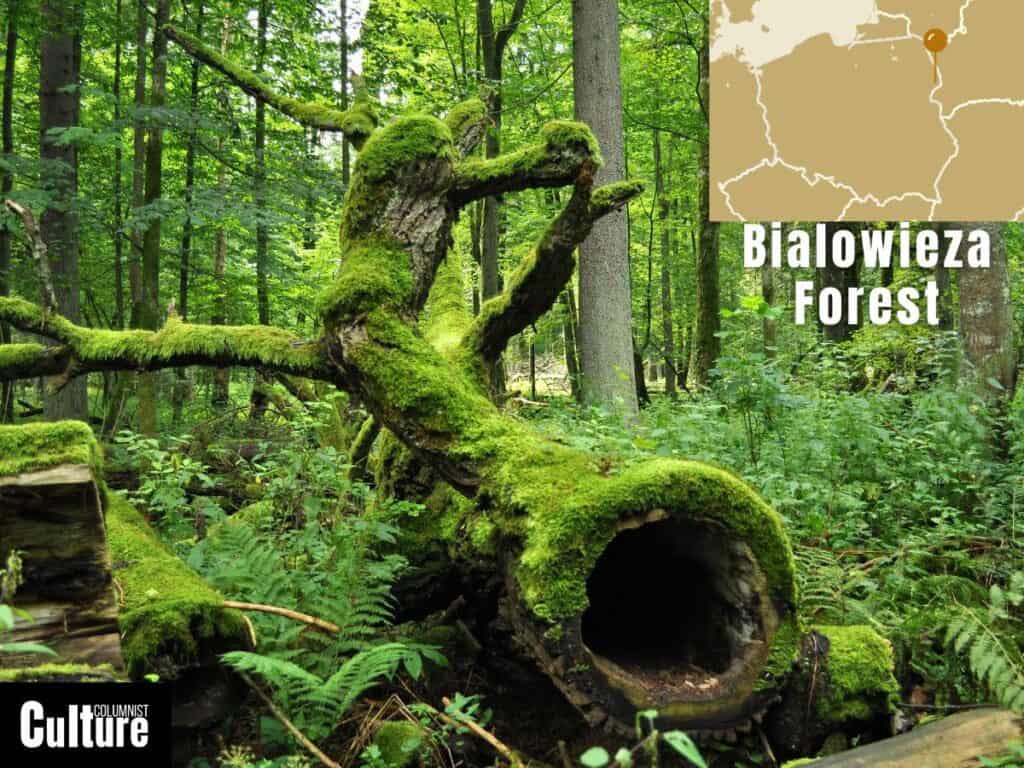
The Białowieża Forest, straddling Poland and Belarus, stands as one of Europe’s last expansive remnants of ancient woodland and holds UNESCO World Heritage Site status.
The forest is filled with towering oak, hornbeam, spruce, and pine trees, some aged over 600 years. This ancient woodland also hosts a distinctive underbrush of wildflowers and ferns, fostering a multi-layered and intricate ecosystem.
Rich in fauna, the forest’s notable inhabitants include the European bison—Europe’s heaviest terrestrial creature and the forest’s emblem. The sanctuary is also home to other endangered species like the lynx and lesser spotted eagle.
The forest is separated into two zones: the State Forest of Bialowieza and the Bialowieza National Park. The State Forest is managed by humans, whereas Bialowieza National Park doesn’t have any human interference at all. The state forest is open to the public and is easily reached from major cities like Warsaw and Brest, but you’ll need a permit and a licensed guide for Bialowieza National Park.
Wild Taiga forest, Finland
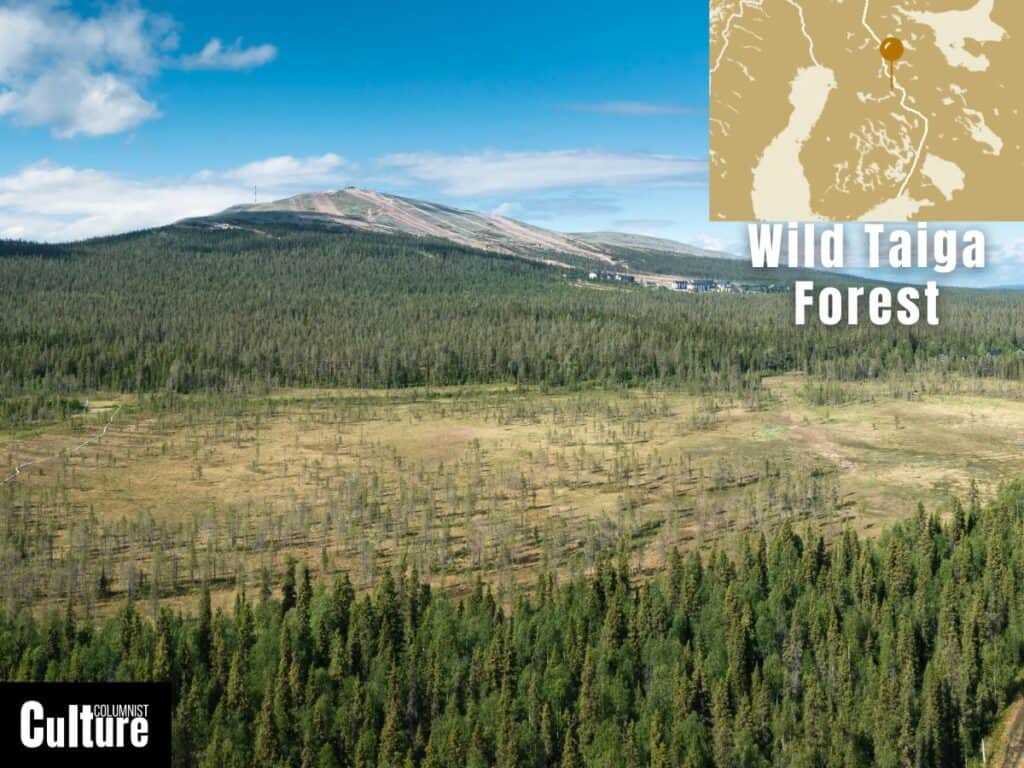
The Wild Taiga Forest, located in eastern Finland, spans the Kuhmo and Suomussalmi regions. This area is part of the greater boreal forest belt that covers much of Scandinavia and parts of Russia.
The boreal landscape is distinguished by dense groves of spruce, pine, and birch trees, and the forest floor is a mix of lichen, moss, and various small shrubs. Numerous lakes and rivers meander through the terrain, offering scenic views and habitats for freshwater fish such as pike and perch.
The forest contains a unique ecosystem thanks to a layer of bedrock and permafrost lying underneath the soil, preventing water from draining and resulting in large areas of boglands. It’s a vital sanctuary for a number of endangered species, including the Canadian lynx, gray wolf, and grizzly bear.
In winter, the forest is perfect for cross-country skiing or snowshoeing, while summer allows the opportunity to see wildlife such as bears, wolverines, birds of prey and elk in their natural settings.
You can visit the Taiga forests by private car or by day tours out of the nearby villages. Visitor centers in both Kuhmo and Suomussalmi provide resources such as maps, guided tours, and additional insights about the forest.
Black forest, Germany
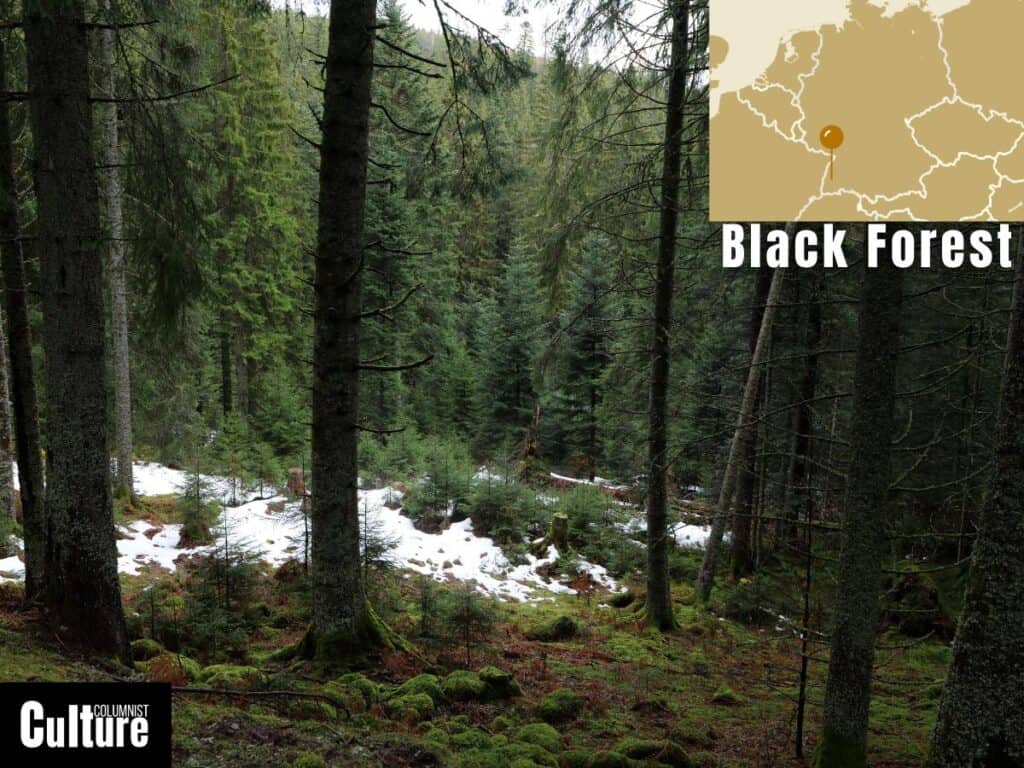
The Black Forest, nestled in the southwestern state of Baden-Württemberg, Germany, is an ancient forest that is revered as one of Europe’s most recognized woodlands and was even the backdrop for numerous tales by the Brothers Grimm.
The forest is a UNESCO biosphere reserve, with approximately 70% of the region covered by forests. It covers a mountainous region with predominantly dense evergreen trees, including Norway spruce and silver fir.
While the forest has been cultivated for timber, it still contains areas of old-growth trees and more open spaces filled with meadows and glacial lakes. Streams and rivers cut through the landscape, most notably the Danube, which originates in the Black Forest.
Within the forest, there is plenty to do. Walk the breathtaking Wildline Suspension Bridge in Bad Wildbad for stunning vistas, take a scenic drive along the Black Forest High Route, and zipline in the Kinzig Valley. The forest is easy to access by car or public transit, with Freiburg among the closest cities.
Hallerbos forest, Belgium
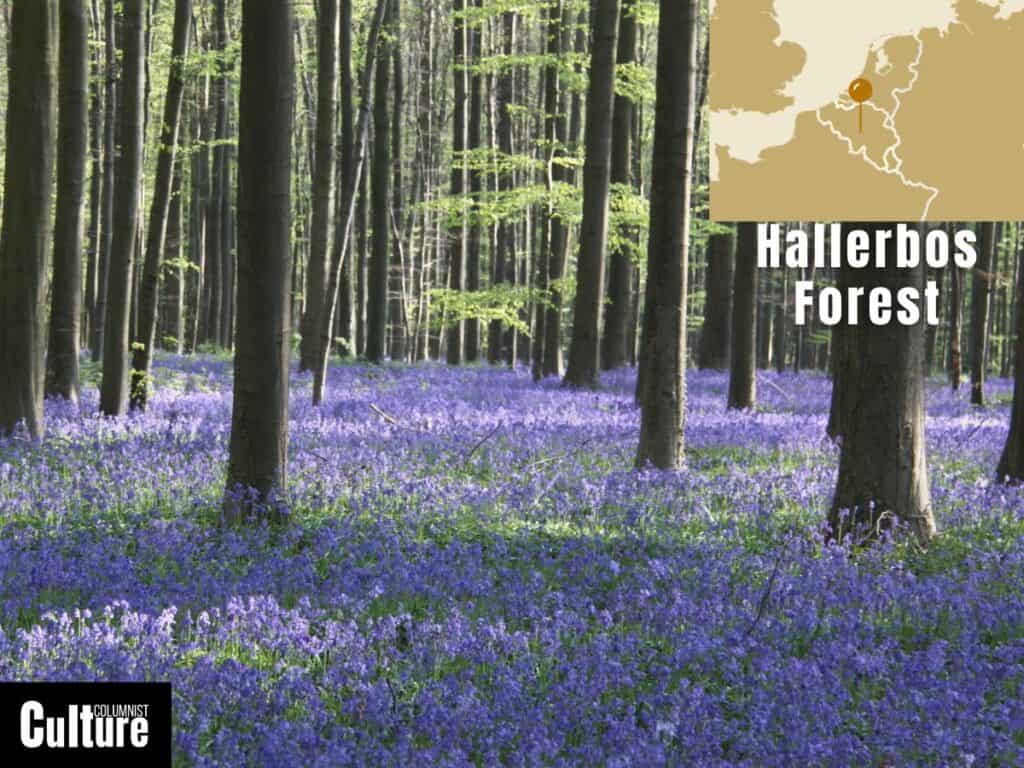
The Hallerbos Forest, known colloquially as “The Blue Forest,” is located in Belgium, specifically in the Flemish Brabant province, about 15 kilometers (9 miles) south of Brussels. Hallerbos is famous for its annual bluebell bloom, which turns the forest floor into a magical blue carpet.
Though not as ancient as some European forests, Hallerbos dates back to the 19th and early 20th centuries, when reforestation efforts took place after the original woodland was cleared for agriculture and industry during earlier centuries.
The main feature of Hallerbos is its extensive carpet of bluebell flowers, which bloom en masse usually between mid-April and early May. The forest is lush with beech trees, creating a high, leafy canopy that allows dappled sunlight to filter through.
The most unique experience of Hallerbos is witnessing the sea of bluebells during their peak blooming season in the spring, which attracts visitors and photographers from all over the world.
The forest is easily accessible by car from Brussels in under an hour or by public transportation. There is no official visitor center, but maps and information boards at the main entrances guide visitors through the well-marked trails.
Plitvice Lakes Forest, Croatia
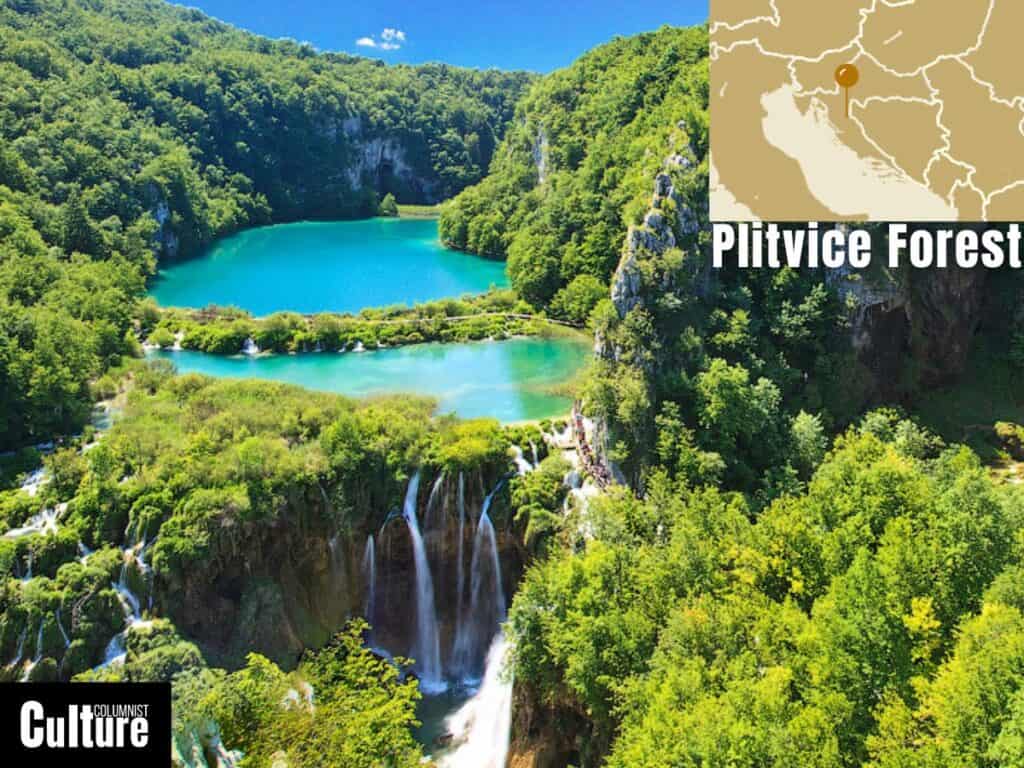
The Plitvice Lakes Forest, spanning 29,685 hectares, is situated within Croatia’s Plitvice Lakes National Park in the southern part of the mountain range of Mala Kapela, at an altitude of 450 to 1280 m. This forest is part of a UNESCO World Heritage Site and is among Europe’s oldest and largest national parks.
The forest covers 75% of the park’s surface with a mixture of alpine beech, spruce, and fir trees. The woodland is nourished by an interconnected series of 16 turquoise lakes, winding rivers and powerful waterfalls, making it distinctively lush.
The dense forest provides a vibrant woodland habitat for the surrounding wildlife, which includes rare and endangered species such as the European brown bear, wolves, and the Eurasian lynx.
One of the most captivating seasonal phenomena at Plitvice Lakes Forest is the freezing of waterfalls in winter, creating surreal icy sculptures. Visitor centers within the park offer maps, guided tours, and educational exhibitions, enabling a detailed exploration of this exceptional forest and its lakes.
Saxon Switzerland Forest, Germany
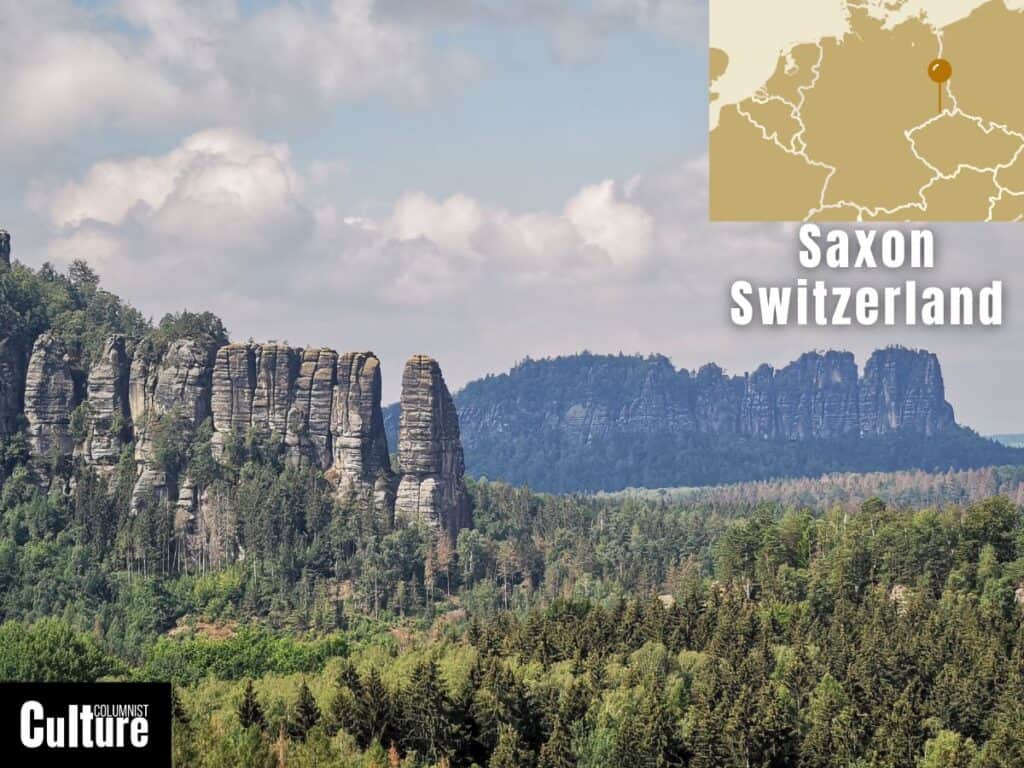
The Saxon Switzerland Forest, located in eastern Germany, is adjacent to the Bohemian Switzerland in the Czech Republic and together form the Saxon-Bohemian Switzerland National Park in the Elbe Sandstone Mountains.
The forest is known for its peculiar sandstone formations, while the landscape is dotted with castles and fortresses, making it a popular location for both sightseers and outdoor enthusiasts. Seasonal changes transform the forest floor into a colorful spectacle against the backdrop of the dramatic sandstone formations, making it a photographer’s paradise.
While the forest is predominantly composed of deciduous trees like beech and oak, there are also patches of spruce. The forest is home to wildlife such as the European pine marten, red deer, wild boars, and various raptors, including the European honey buzzard.
To reach the Saxon Switzerland Forest, the nearest city is Dresden, which is well connected by train and bus services to the towns of Pirna and Bad Schandau, gateways to the forest. Several visitor centers are spread across the region, offering maps and guided tours of the hiking trails and rock climbing available in the forest.
Triglav Forest, Slovenia
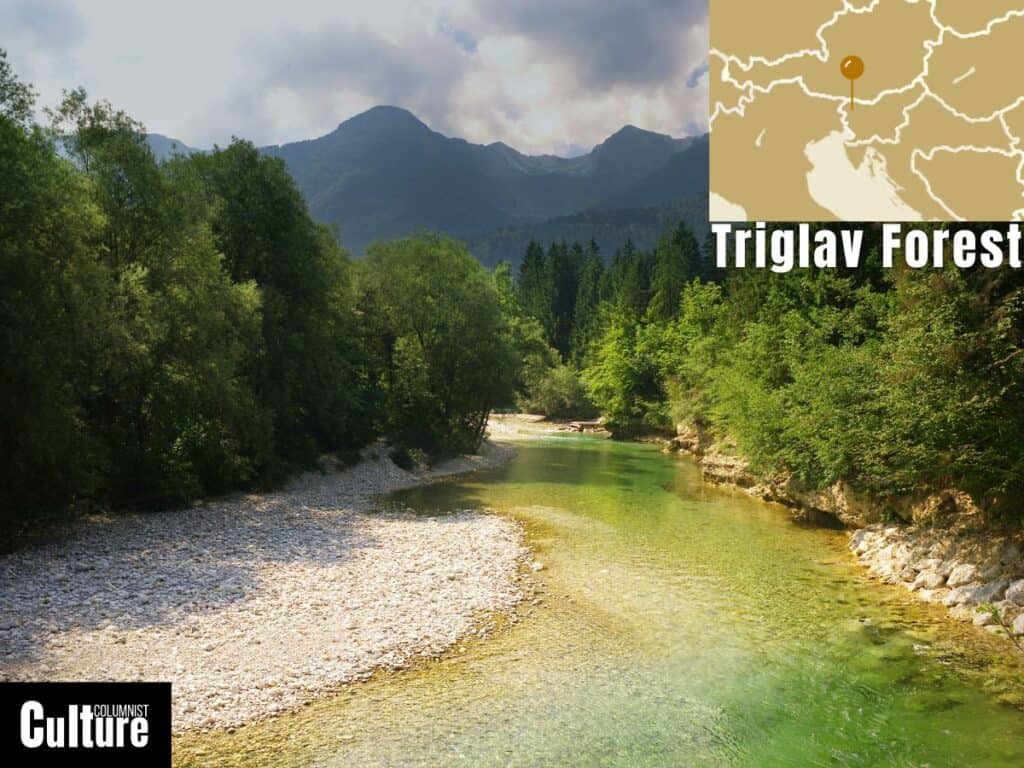
Triglav Forest, part of Triglav National Park, is Slovenia’s only national park, situated in the Julian Alps. Named after Mount Triglav, the highest peak in Slovenia, this forest has significant ecological importance for the conservation of Europe’s unique Alpine flora and fauna. The park itself is one of the oldest in Europe, designated in 1924, and the forest forms a large part of it.
The Triglav Forest is primarily an Alpine forest, dominated by species like the European larch and Norway spruce. The landscape transitions from meadows to dense forests as you ascend the mountain slopes and is home to wildlife such as the European chamois, red deer, roe deer, and even Eurasian brown bears.
The forest offers a whole host of activities, including rafting, kayaking, paddleboarding, paragliding and ziplining, while winter transforms it into a snow-capped wonderland suitable for cross-country skiing.
Triglav Forest is most accessible through the nearby town of Bled, which is about an hour’s drive from Slovenia’s capital, Ljubljana. The national park has several visitor centers, including one in the town of Mojstrana, which provides extensive information, including maps and guided tour options.
Caledonian Forest, Scotland
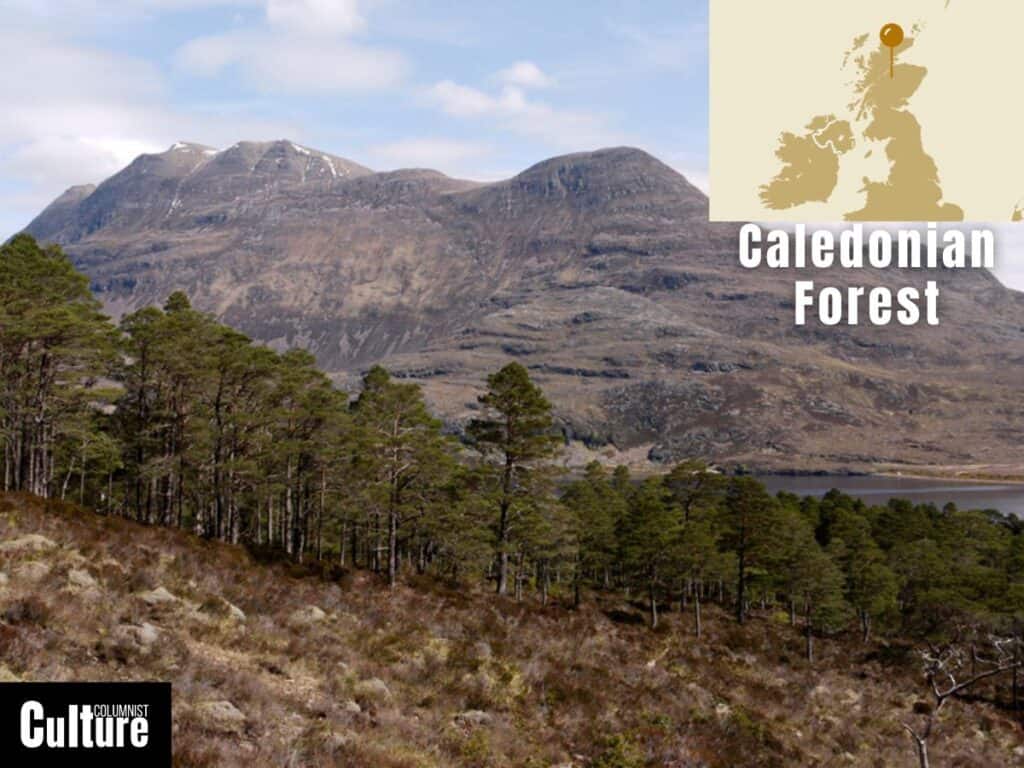
The Caledonian Forest, situated in the Highlands of Scotland, is a remnant of the vast primaeval wilderness that once covered much of Scotland. Its historical significance lies in its ancient lineage, as it is one of the last strongholds of native pinewood forests in the country.
The Caledonian Forest is dominated by Scots pine trees, which can grow to impressive heights and live for hundreds of years. Other trees in the forest include birch, rowan, aspen, and juniper trees, while the underbrush is rich in heather and blueberry, providing a unique tapestry of colors and textures.
Visiting the Caledonian Forest offers different experiences depending on the season. In the autumn, the forest floor is a riot of colors, and in the spring, the undergrowth comes to life with blooming heather and other wildflowers. Winter often shrouds the forest in a blanket of snow, creating a mystical landscape.
The forest is accessible by car and public transportation, with Inverness serving as a nearby access point. There are visitor centers in and around the forest, including the Rothiemurchus Estate, where you can get maps and book a Land Rover tour.
Bavarian Forest, Germany
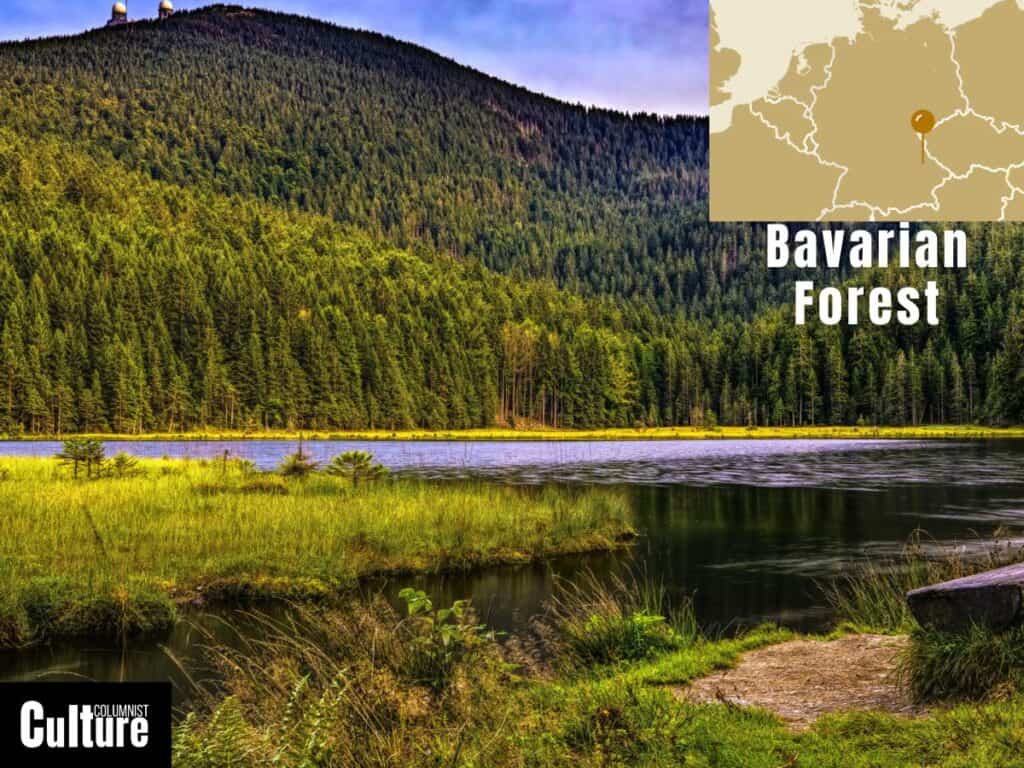
The Bavarian Forest, known as Bayerischer Wald in German, is located in southeastern Germany along the border with the Czech Republic. This mountainous region is one of the oldest national parks in Germany, established in 1970. Ecologically, it forms a critical green corridor in Central Europe, linking the forests in the Czech Republic and Austria.
The forest is characterized by dense tree cover, including spruce, beech, and fir trees, creating a towering green canopy that gives the forest its iconic appearance. The forest supports a diversity of wildlife, including the Eurasian lynx, which was reintroduced successfully and is now a symbol of the forest’s revival.
The unspoiled nature makes the Bavarian Forest a popular hiking and biking destination in the summer and a thrill-seeker’s paradise in the winter, with cross-country skiing, tobogganing, hiking and snowshoeing being the most popular activities.
To visit the forest, you can start in towns like Grafenau or Zwiesel, easily reachable by train from major German cities. The forest has several visitor centers, such as the Hans-Eisenmann-Haus, providing maps, exhibitions, and guided tours that offer educational insights into the forest and its ecosystem.
Kočevje Forest, Slovenia
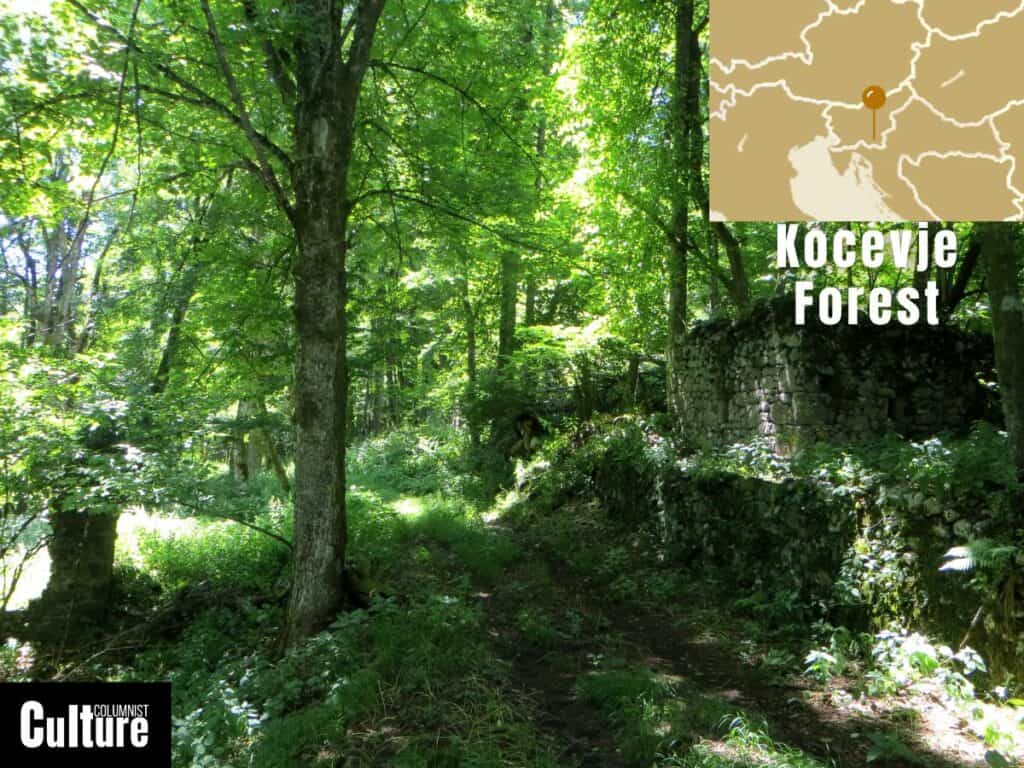
Kočevje Forest, located in southeastern Slovenia, spans a large area that includes the Kočevje municipality. Notably, it’s one of the last primeval forests in Europe, containing sections of woodland that have never been logged or managed by humans.
The most recognisable virgin forests in Kočevsko are Rajhenavski Rog and Krokar. Although you cannot enter the virgin forests, there are other areas of the forest to enjoy.
Kočevje Forest is characterized by a combination of broadleaf and coniferous trees, such as beech, spruce, and fir, with an underbrush of ferns, mosses, and numerous varieties of fungi. The forest is locally known as “The Kingdom of the Bear” thanks to its most notable inhabitant, the European brown bear.
There is a wealth of activities to enjoy in the forest, including bear-watching tours, scenic cycling routes, snowshoeing along the Wolf Trail, guided tours of Kostel Castle and even beer tasting at a local family-owned brewery. The Tourist Information Center Kočevje is located in the Tourist Complex Jezero, where you can book a private forest guide in your preferred language.
What is the biggest wild forest in Europe?
The Carpathian Forest is one of the biggest wild forests in Europe and stretches across the vast Carpathian mountain range, encompassing parts of the Czech Republic, Slovakia, Poland, Ukraine, and Romania. This extensive forest is located in one of the most remote areas in Europe, with mountainous terrain and relatively low human impact.
The Carpathian Mountains, with their rugged and often inaccessible terrain, have provided a natural barrier against extensive human development and exploitation. This has allowed the forest to maintain a high degree of wilderness, preserving its natural state over centuries to a greater extent than many other European forests. This challenging mountainous European landscape has also deterred large-scale agricultural activities and urban development, which are more common in the flatter, more accessible plains of Europe.
What is the oldest forest in Europe?
The Białowieża Forest, straddling the border between Poland and Belarus, is considered the oldest forest in Europe. This vast primeval forest once stretched across the European Plain and is one of the continent’s most important natural heritage sites due to its age, size, and biodiversity, and has even been awarded UNESCO World Heritage Site status.
It’s home to many species, including the largest population of European bison on the continent. This is a great accolade for such an ancient forest because the bison were on the brink of extinction not so long ago. However, thanks to big conservation efforts, the forest’s natural state has been preserved and protected areas have helped to restore their herd numbers.
How many national parks are in Europe?
Europe has over 500 national parks spread across the continent, from the mountainous regions of the Alps and the Pyrenees to the vast boreal forests of Scandinavia and the unique landscapes of Eastern Europe. Each country contributes to this tally with its own set of nationally protected areas.
Europe’s national parks offer a mosaic of landscapes and wildlife to explore, from the volcanic formations in Iceland’s Vatnajökull National Park to the tranquil lakes and forests of Poland’s Białowieża National Park and its European bison. The diversity and beauty of national parks in Europe make them a major draw for eco-tourism, contributing significantly to local conservation efforts while promoting sustainable living tourism.

